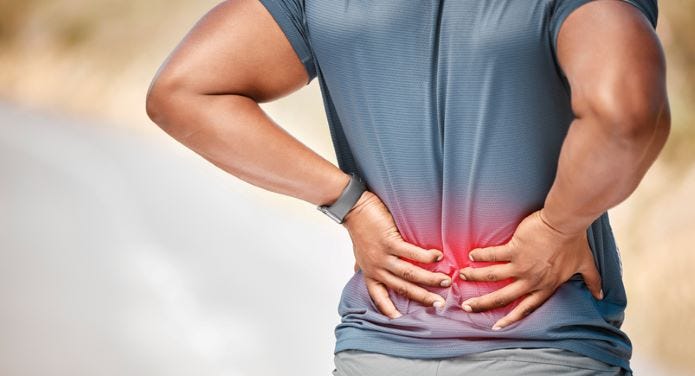The Back Story – Preventing the Leading Cause of Disability
The Timeless Battle Against Low Back Pain
In the shadowy corridors of Thebes, Egypt, a relic of ancient wisdom lay undisturbed for over three millennia, its secrets locked within the fragile fibers of a papyrus scroll. Discovered by antiquities dealer Edwin Smith in 1862, this enigmatic document eluded translation until the renowned Egyptologist James Henry Breasted took on the formidable task in 1920. His groundbreaking work revealed that the scroll, contained medical insights, including a clinical description of acute lower back pain that reads remarkably like a modern medical examination. The ancient physician's diagnosis was," a sprain in the vertebrae of his spinal column, an ailment of which I shall treat" and the treatment was to “place him prostate on his back.”
The Global Burden of Low Back Pain
Fast forward to the modern era, and we find that low back pain affected 619 million people globally by 2020, making it the leading cause of disability worldwide. This staggering figure is projected to reach 843 million by 2050, representing a 36% increase driven primarily by population growth and aging.
The numbers are as severe in the United States. In 2016, low back pain affected approximately 31.6 million Americans, nearly 10% of the population. The prevalence peaks among working-age adults, particularly those aged 50-55, with women experiencing higher rates than men across all age groups.
What makes low back pain particularly unfortunate is its recurrence rate. Nearly 70% of people who recover from an episode of low back pain will experience another within a year. This creates a revolving door of disability that affects not just individuals, but entire families, communities, and economies.
A recently published study on low back pain showed how walking may reduce this national burden. Walking 100 minutes a day was associated with a 23% reduced risk of chronic low back pain. The findings showed that as the amount of daily walking increased, the risk of chronic low back pain decreased, and also revealed that moderate or brisk walking was more protective than a slow pace.
The Economic Costs
Not only is low back pain a leading cause of disability, but it’s also expensive. In the United States, the combined cost of low back and neck pain reached $134 billion in 2016. It is the third-highest category of health expenditure after diabetes and heart disease. The direct medical and indirect costs of low back pain exceed $50 billion per year and could reach as high as $100 billion. On average, Americans spend more than $30,000 on back pain-related costs over the five years after first diagnosis.
The human cost extends far beyond dollars. Low back pain results in 186.7 million lost workdays annually in the United States alone. It's the leading cause of work disability, forcing individuals into early retirement and creating ripple effects that impact families and communities.
Top Causes
A complex interplay of factors, many related to modern lifestyle choices, can cause low back pain. The most significant ones include:
Occupational Factors: Heavy physical work, frequent lifting, combined postures involving rotation and flexion, and prolonged sitting represent the most commonly cited occupational risk factors. Exposure to whole-body vibration, such as from motor vehicle driving, also significantly increases risk.
Obesity and Weight: Excess body weight creates additional stress on spinal structures, with both abdominal obesity and general obesity significantly increasing the risk of low back pain and lumbar radicular pain.
Lifestyle Factors: Smoking, sedentary behavior, and poor physical fitness all contribute to increased back pain risk. Weak back and abdominal muscles cannot properly support the spine.
Previous History: The strongest predictor of future low back pain is a history of previous episodes, with higher severity of prior injury leading to higher risk of recurrence.
Low Back Pain is Preventable
Despite low back pain’s pervasiveness, it is largely preventable. Several evidence-based prevention strategies can dramatically reduce both the incidence and recurrence of back pain.
Walking and Physical Activity: Besides the recent study already mentioned, other research has demonstrated that people who walked regularly after recovering from low back pain remained pain-free nearly twice as long as those who didn't, 208 days compared to 112 days. Walking for at least 30 minutes, five times per week, provides multiple benefits such as gentle oscillatory movements that load and strengthen spinal structures, stress relief, and the release of pain-relieving endorphins. In addition, muscle-strengthening exercises including core stability ones, at least twice weekly, can reduce the risk of low back pain.
Proper Posture and Ergonomics: Maintaining neutral spine positioning during sitting, standing, and lifting activities reduces mechanical stress on spinal structures. This includes using proper lifting techniques, such as bending at the knees rather than the back, keeping loads close to the body, and avoiding twisting motions.
Weight Management: Achieving and maintaining a healthy weight reduces mechanical stress on the spine.
Myths
Despite centuries of experience with low back pain, numerous myths persist that can harm recovery and prevention efforts. Evidence-based research has debunked several common misconceptions:
1) Bed rest is the best treatment for back pain. However, prolonged rest weakens muscles and delays recovery; gentle movement and activity promote healing.
2) Back pain always indicates a serious underlying condition. Yet, most cases result from lifestyle factors, posture, or muscle strain rather than serious pathology.
3) Exercise will worsen back pain. Appropriate exercise strengthens supporting muscles and provides long-term pain relief.
4) Surgery is the only solution for persistent back pain. Still, most cases respond well to conservative, non-surgical treatments.
The Future
The beauty of low back pain prevention lies in its simplicity and accessibility. Walking costs nothing, requires no special equipment, and can be adapted to virtually any fitness level or geographic location. When combined with basic core strengthening exercises and attention to posture and ergonomics, these interventions have the potential to prevent millions of cases of disability while saving billions in healthcare costs. Stand up, move more, and walk your way to a healthier spine.






